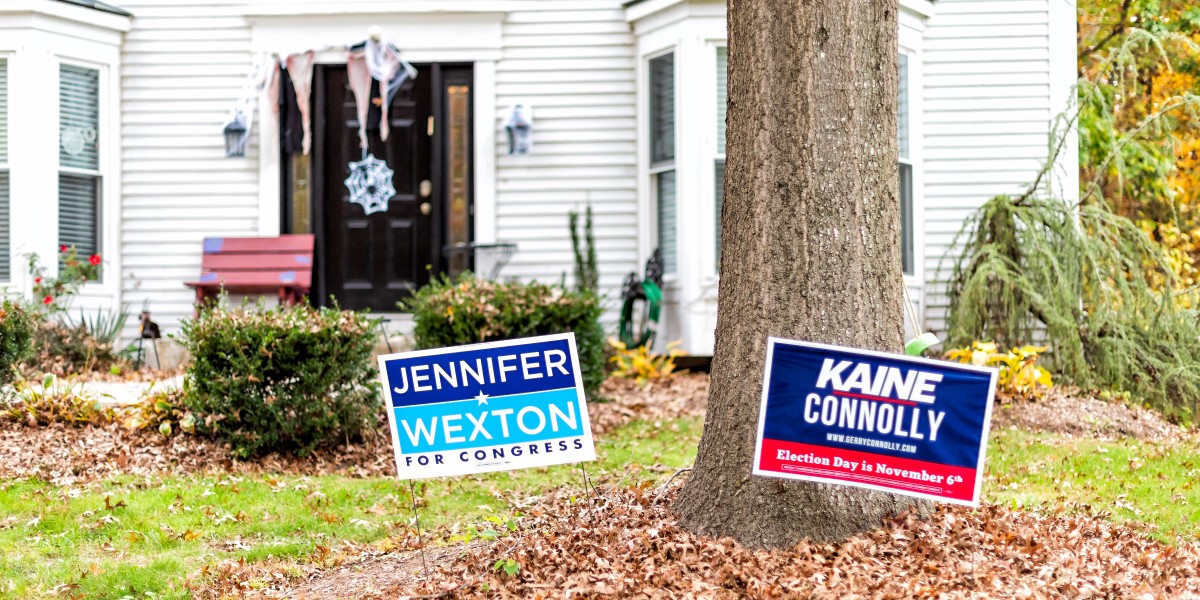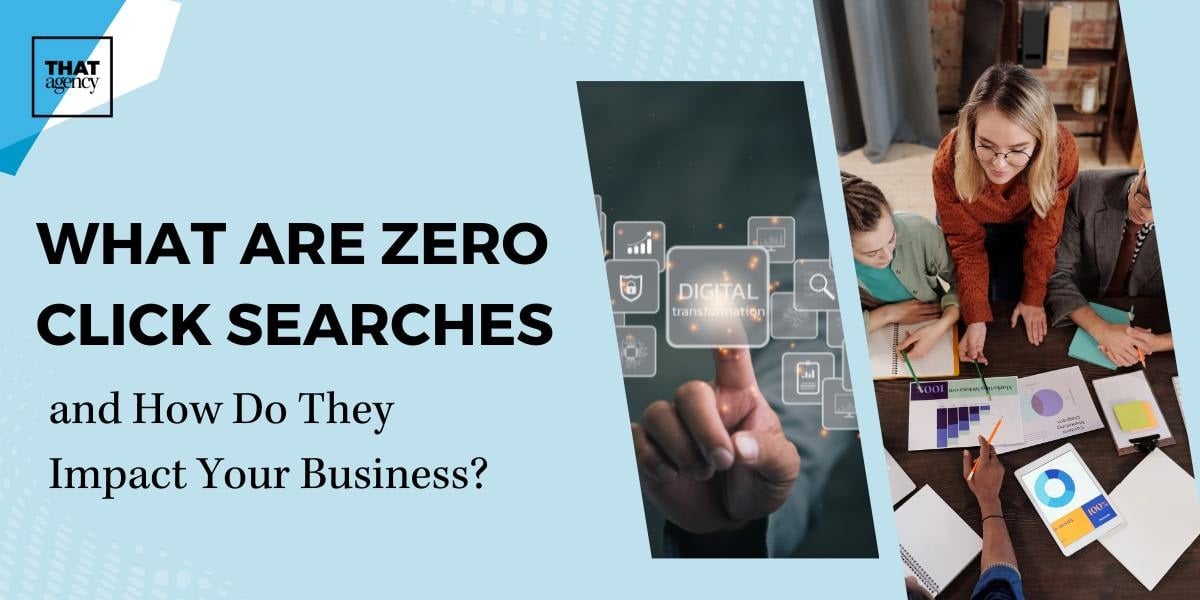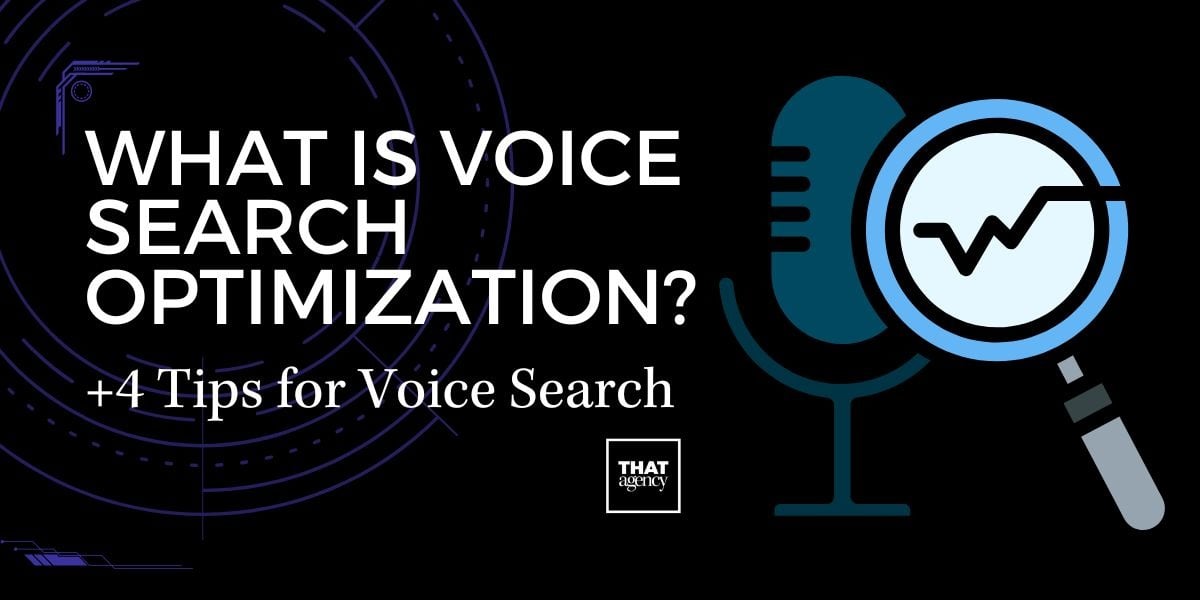Google Photos provides many methods of searching through your personal photo library. However, one image search and indexing component that has been on users’ wish lists for a while is the ability for the platform to recognize text within images.
Does Google Have OCR?
Yes, Google Photos recently began rolling out a feature that allows users to search for text inside an image. This new functionality was quietly confirmed on Twitter when Google responded to a user inquiry.
Using optical character recognition (OCR), Google Photos can now identify and extract text from images, even if the characters are angled, skewed, or part of a busy background.
Here’s an example:

Google Image Search | How to Search for Text Inside an Image on Google | THAT Agency of West Palm Beach, Florida
This image of a front lawn has two signs. Each sign contains words in varying fonts, sizes, and angles. A user can now search for this image within their Google Photos library using full or partial keywords from the text in the photo.
In addition to recognizing text for direct searches, Google Lens can also index this content for future retrieval.
This feature is currently rolling out on mobile devices, so check the Google Photos app on your Android or iPhone to see if it's available.
Why Google OCR in Images Matters
When you upload a photo to your website or social media, the text you type, like a caption or alt text, is usually what helps people (and search engines) understand what the image is about. But that’s changing.
Thanks to Google’s new optical character recognition (OCR) feature in Google Photos, the actual words inside the image, like a sign in the background, a product label, or even a menu, can now be searched and indexed. This gives marketers, content creators, and business owners a powerful new way to get their content noticed.
What Does This Mean for SEO and Social Media?
In the past, search engines mostly looked at the image file name, alt text, and any surrounding content to figure out what an image was showing. Now, with Google OCR, the words that appear within the image itself can be used in search results.
That means:
- A photo of your storefront that shows your business name can now help people find your company, even if you didn’t tag or label it.
- An Instagram image with product packaging that includes ingredients or features might show up in search results for those terms.
- A screenshot with a quote or contact information could become searchable, making it easier for users to find again later.
This opens a whole new layer of searchable content, especially useful for brands that rely on visuals to tell their story.
Real-World Example: LinkedIn’s Alt Text Limit
Let’s say you’re posting a promotional graphic on LinkedIn. Currently, LinkedIn allows only about 125 characters of alt text when you upload an image. That’s not a lot of space to describe what’s in the photo, especially if you want to include your company name, keywords, or a call to action.
With Google OCR, however, any text that's part of the image itself, like a product name, website URL, or even a motivational quote, can be detected and indexed. That means people might be able to find your post based on what they see in the photo, not just what’s typed around it.
This is a big win for marketers because it gives them another way to optimize content for search, without having to cram everything into a small alt text field or caption.
Should I Still Use Alt Text?
Absolutely. Just because Google can now read the text inside your images doesn’t mean you should skip traditional SEO steps.
Here’s why alt text is still important:
- Accessibility: Alt text helps people who use screen readers understand what’s in your image.
- Backup for OCR: If the image is blurry or the text isn’t easy to read, OCR might not work well. Alt text ensures you still have searchable info attached to the image.
- Faster Indexing: Google still uses alt text to understand and rank your content. It can help your image appear in image search results.
OCR is an extra boost, but not a replacement. Think of it like adding another layer of visibility, especially useful for image-heavy industries like retail, food, travel, and real estate.
Google’s ability to recognize text in images changes the way we think about visual content. If you’re already adding helpful text to your images, through labels, signs, or packaging, you’re one step ahead. But now, it’s time to start thinking about how that text can help you rank better in search, connect with new users, and increase visibility across platforms.
Why Google OCR in Images Matters
When you upload a photo to your website or social media, the text you type, like a caption or alt text, is usually what helps people (and search engines) understand what the image is about. But that’s changing.
Thanks to Google’s new optical character recognition (OCR) feature in Google Photos, the actual words inside the image, like a sign in the background, a product label, or even a menu, can now be searched and indexed. This gives marketers, content creators, and business owners a powerful new way to get their content noticed.
What Does This Mean for SEO and Social Media?
In the past, search engines mostly looked at the image file name, alt text, and any surrounding content to figure out what an image was showing. Now, with Google OCR, the words that appear within the image itself can be used in search results.
That means:
- A photo of your storefront that shows your business name can now help people find your company, even if you didn’t tag or label it.
- An Instagram image with product packaging that includes ingredients or features might show up in search results for those terms.
- A screenshot with a quote or contact information could become searchable, making it easier for users to find again later.
This opens a whole new layer of searchable content, especially useful for brands that rely on visuals to tell their story.
Real-World Example: LinkedIn’s Alt Text Limit
Let’s say you’re posting a promotional graphic on LinkedIn. Currently, LinkedIn allows only about 125 characters of alt text when you upload an image. That’s not a lot of space to describe what’s in the photo, especially if you want to include your company name, keywords, or a call to action.
With Google OCR, however, any text that's part of the image itself, like a product name, website URL, or even a motivational quote, can be detected and indexed. That means people might be able to find your post based on what they see in the photo, not just what’s typed around it.
This is a big win for marketers because it gives them another way to optimize content for search, without having to cram everything into a small alt text field or caption.
Should I Still Use Alt Text?
Absolutely. Just because Google can now read the text inside your images doesn’t mean you should skip traditional SEO steps.
Here’s why alt text is still important:
- Accessibility: Alt text helps people who use screen readers understand what’s in your image.
- Backup for OCR: If the image is blurry or the text isn’t easy to read, OCR might not work well. Alt text ensures you still have searchable info attached to the image.
- Faster Indexing: Google still uses alt text to understand and rank your content. It can help your image appear in image search results.
In short, OCR is an extra boost, but not a replacement. Think of it like adding another layer of visibility, especially useful for image-heavy industries like retail, food, travel, and real estate.
Google’s ability to recognize text in images changes the way we think about visual content. If you’re already adding helpful text to your images, through labels, signs, or packaging, you’re one step ahead. But now, it’s time to start thinking about how that text can help you rank better in search, connect with new users, and increase visibility across platforms.
Real-World Application: Social Media Strategy
If you're managing a brand’s social media or search engine marketing, the way you think about image content is about to change. With Google’s OCR (optical character recognition) becoming more widely available in Google Photos, text within your images can now help drive traffic, just like keywords in a caption or a hashtag.
That means it's time to be more intentional with the visuals you create and share.
Why This Matters for Marketers
Most people think search engine optimization (SEO) is just about blog posts or web pages. But in today’s digital world, images are just as important, especially on social platforms like Instagram, Facebook, Pinterest, and LinkedIn, where visuals often are the content.
So here’s the big question: What if the text inside your image could help people find your content?
Thanks to OCR, that’s now possible.
How to Optimize Social Images for Google OCR
You don’t need to be a graphic designer to make your images more searchable. Small tweaks can make a big difference. Here are some easy ways to start:
1. Include Your Company Name in Visuals
If you’re posting a photo of your storefront, event signage, or packaging, make sure your company name is visible in the image. Don’t worry about centering it or making it look overly promotional, Google OCR can pick up even subtle or off-center text.
Does the text have to be front and center? No. As long as the text is clear and readable, even on a sign in the background, OCR may recognize it.
2. Add Relevant Hashtags or Keywords
If you use custom hashtags or target long-tail keywords (like “organic dog treats Miami”), try incorporating them visually, on your labels, signs, or even T-shirts worn in the photo. This gives you an extra shot at showing up in search results beyond just captions.
Pro tip: Think about the context of the photo. Text doesn’t need to be designed as an overlay. If it exists naturally in the scene, like on a menu, product box, or banner, it still counts.
3. Encourage User-Generated Content (UGC) With Text
If customers or followers are sharing images that feature your business name, product packaging, or branded signs, that’s content that can now be indexed. Encourage them to share images where your branding is visible.
Can this help local SEO? Yes! If your business name and location are visible in the image (like “Joe’s Pizza – Orlando”), it gives Google more context to connect your brand to a place, which helps with local search visibility.
How to Use Google Photos to Search for Text in an Image
Want to try it out for yourself? Google has made it surprisingly simple. Here’s how you can search for text inside your images using the Google Photos app:
Step-by-Step Guide:
- Open the Google Photos app on your Android or iPhone.
- Tap on the search bar at the top of the screen.
- Type in what you’re looking for, like coffee shop, Joe’s Pizza, or even a phone number.
- Scroll through the results. If Google finds a match, you’ll see the image appear.
- Tap the image to open it.
- Tap the Google Lens icon (a square with a dot in the center).
- Google will now highlight all the visible text in that image.
- Tap on the words you want to copy.
- Select “Copy text” and paste it into your browser, notes, or messages.
What Can You Find With This Feature?
This tool is especially helpful for locating:
- Screenshots of menus, quotes, or contact info
- Pictures of signs or flyers
- Business cards or handwritten notes
- Receipts or order confirmations
- Saved addresses or directions
Can I search even if I forgot when I saved the image? Yes! As long as the text is clear, Google OCR can pull it up regardless of the date or folder.
This isn’t just a fun new tool, it’s a powerful shift in how content is discovered. By thinking ahead and strategically placing searchable text within your visual content, you can unlock new ways for users to find your brand. Whether you're designing posts, creating product packaging, or encouraging UGC, this is a low-effort, high-reward SEO move that’s worth building into your strategy now.
Final Thoughts
The integration of OCR into Google Photos marks a shift in how we interact with visual content. It not only makes image libraries easier to search but also opens new SEO opportunities for brands. As this feature continues to evolve, we recommend keeping an eye on how it affects your traffic and visibility, especially on mobile.
Stay tuned to the THAT Agency digital marketing blog for updates on this and other emerging trends in search and social media.





.jpg)